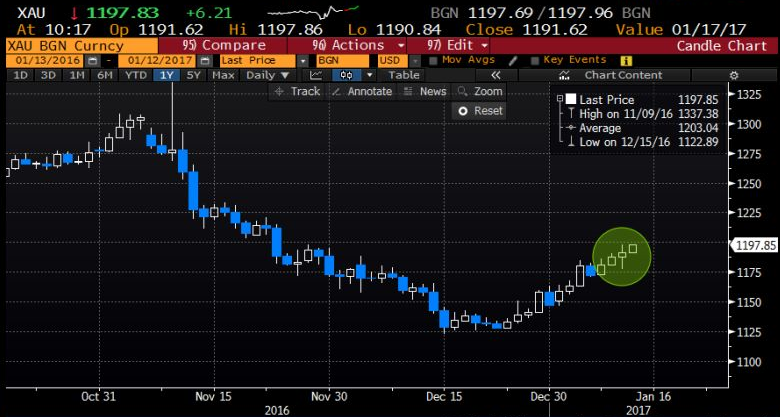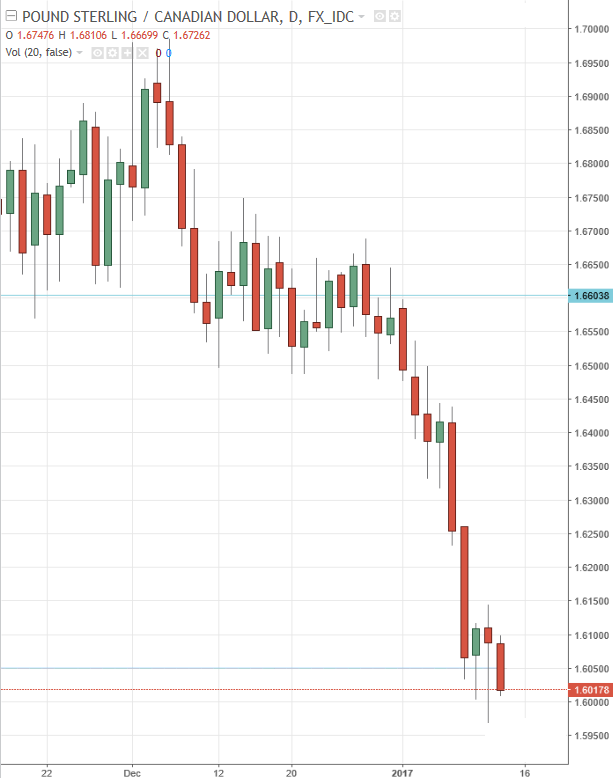Daily Insights Report 12/01/17
- 31 Mar 2017
12 Jan 2017
The Dollar saw some if its recent gains vanish almost immediately after what appears to be a disappointing press conference held by the President-Elect. US stocks saw volatile trading, and the Dollar weakened at the same time. Yields on the 10-year US bond also went down. At present, there has not been much mention from the President-Elect about the high Dollar other than the consequences. A study shows the words “strong dollar” have only been mentioned once in over two million words from the President-Elect. With his proposed spending package that would impact healthcare policy, tax, and trade – they are believed to lead to higher interest rates and in turn a higher Dollar, which is yet to be addressed.
– The Yen was saw a small gain of 0.3% against the Dollar on Wednesday, and was trading at 115.45 per USD.
– The Australian Dollar traded around 74.41 US cents after it gained 1% on Wednesday alone.
– The Pound touched a three-month low of $1.2036 after crawling back up to reach $1.2201. The abrupt change in the value of the Pound comes from the governor of the Bank of England’s comments about financial stability in the UK. He mentioned that Britain leaving the EU would not be the biggest risk to the financial system.
Commodities
– West Texas Intermediate (WTI) crude was selling at $52.25 a barrel. This comes after news about US oil refineries which processed a new record of crude oil last week.
– The price of copper reached its highest level in more than one month on Tuesday. This is due to the weaker Dollar and positive production information from China. Towards the end of 2016, copper rebounded after a year of falling behind other metals.
– Gold rose 0.3% in yesterday’s trading session. This was the third straight day of gains for the metal. The metal reached a seven week high as a result. The graph below shows how it has been almost consistently going up from late December.

United States Dollar (USD)
Import Price Index
This index measures the average changes in the price of goods and services that are imported to the US. It is assumed that the rising commodity prices can lead December’s reading on the Import Price Index to the biggest gain in seven months. Since commodity prices have risen, it has been to the delight of many energy and mining firms as their business ventures are now more profitable. The expectation of this data is 0.8%.
Euro (EUR)
Euro Zone: Industrial Production (November)
This data normally does not have a significant impact on the value of the currency. This is because the two major economies (France and Germany) release production data earlier. This summary of all the countries combined can show a more clear picture of production conditions in the area without concentrating on a single country.
Euro zone industrial production likely expanded by 0.4% month-over-month and 1.4% year-over-year in November. Germany is believed to have been behind the mediocre performance. This is because of the drop in the country’s PMI data. This went from 55 to 54.3 in November. Germany is the most populated country in the EU, so more emphasis is placed on the activity of the country because of its economic potential. The French industry’s prospects were slightly better because export figures from Friday showed a jump in external demand for French goods. France’s PMI data also showed to be kept steady from the previous month – which is when it reached a two and a half year high. Other important members of the Euro Zone including Italy and Spain should show a small expansion, but the two worth noting include France and Germany.
Technical Analysis
GBPCAD
The Pound falling to its lowest level since October suggests that there is an opportunity to trade a pair that where each side is facing different issues. The Pound fell as a result of fear that Theresa May is leading Britain with uncertainty once they leave the single market. This caused the Pound to weaken sharply against both the Dollar and Euro (the fall against the Dollar was 1.29% almost instantly after the remarks). In addition to Mark Carney’s recent speech, there is more uncertainty about the impacts and the proceedings of Brexit.
The Canadian Dollar on the other hand has been performing well. With oil prices currently not so stable, it is the main looming factor that would influence the value of the CAD. Should the price of oil rise, it would likely increase the value of the Canadian Dollar since they would increase output from existing reserves in Canada’s midlands. Positive employment data has also shown an optimistic side for Canada’s economy.
A possible strategy for trading this pair would be to short the currency pair until the 1.580-1.590 region is reached. The SSI indicator showed that there was an increase in the ratio of long positions to short positions.


